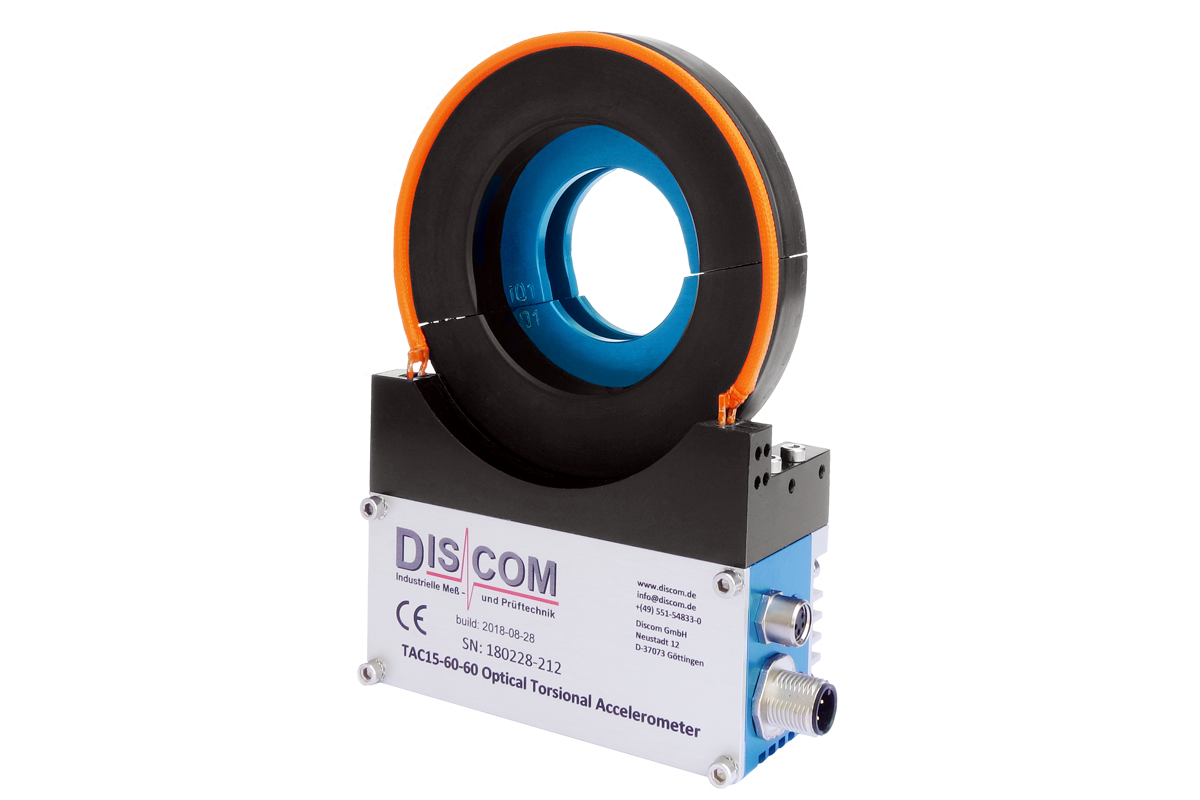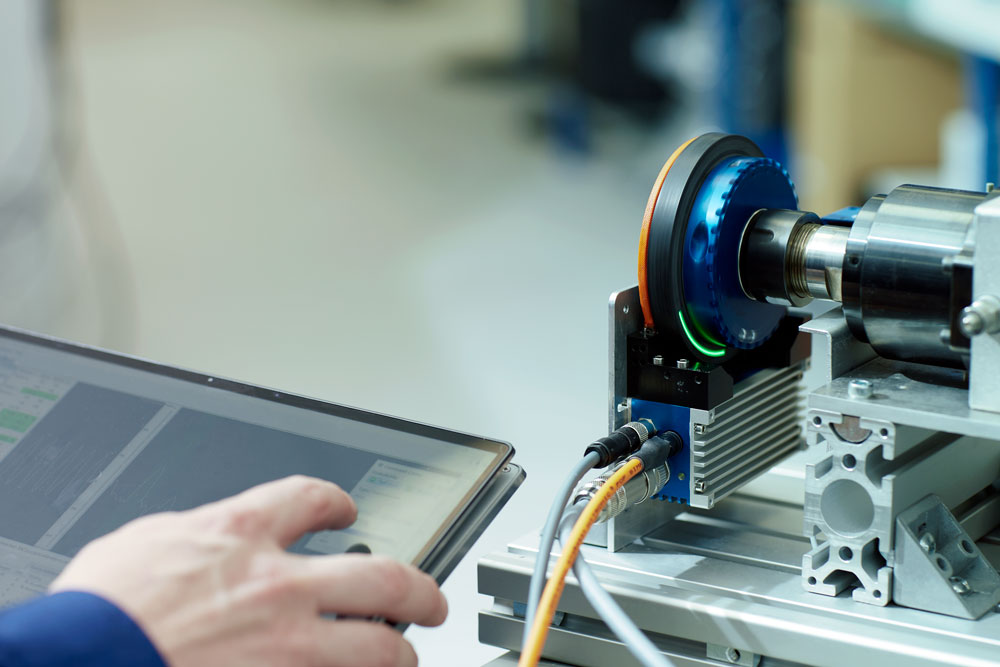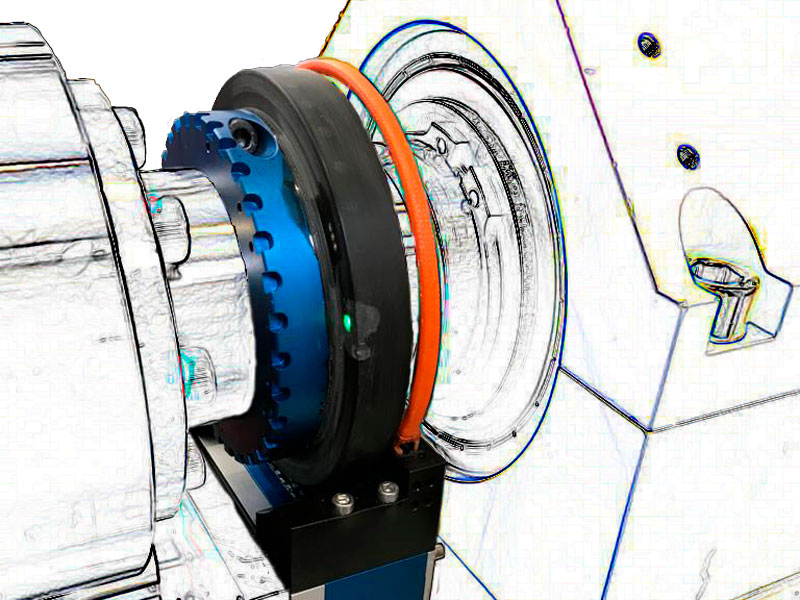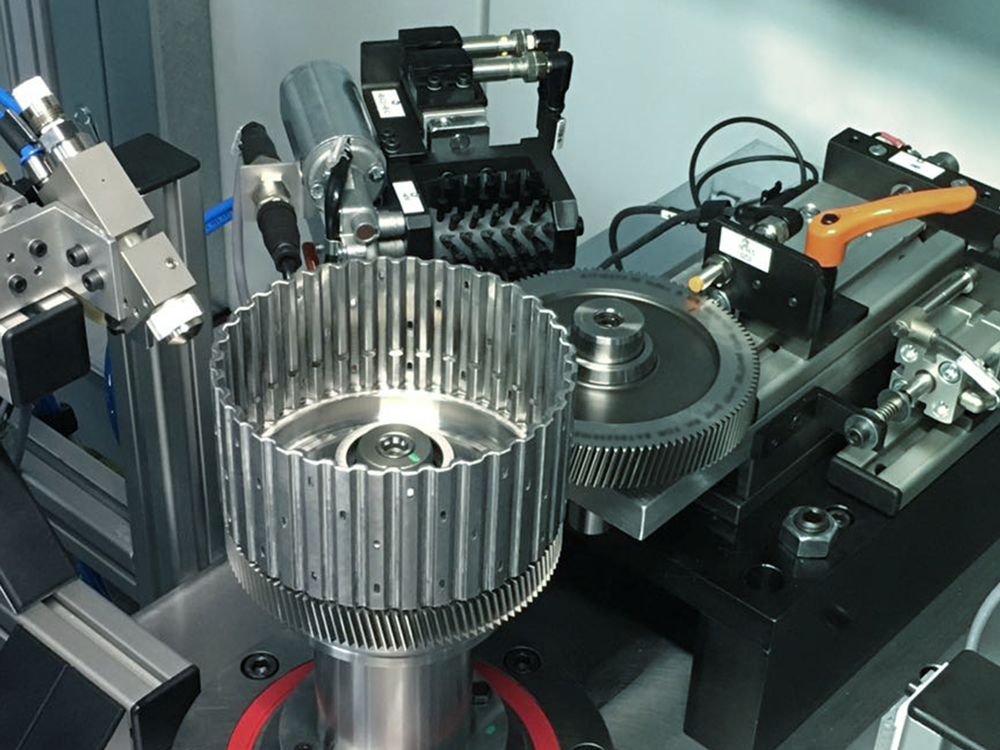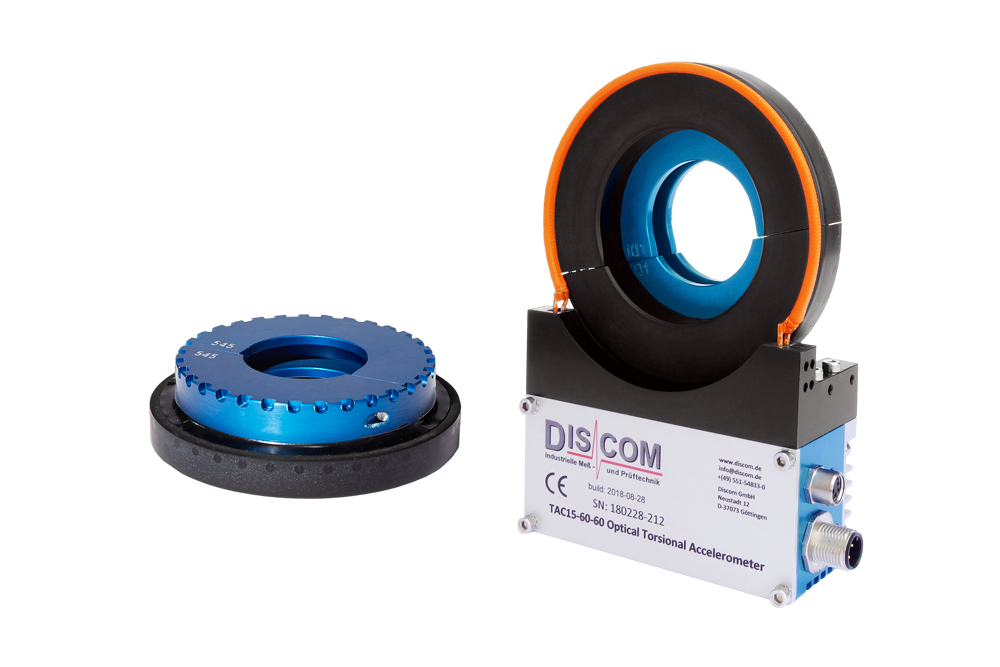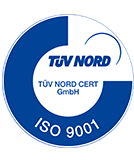Measuring in a rotating system
Test bench measurements with correlation to the vehicle
Rotational irregularity measurements
In the standard method of measurement, noises from the test specimen are only acquired indirectly, for example by a sensor on the housing of a transmission. This makes it difficult or impossible to determine the source of many errors. A significantly better analysis is a measurement directly at the origin of the noise – the rotating shaft.
Best correlation with the disturbance variables
The TAC15 rotational acceleration sensor measures in a rotational acceleration reference system: at the connecting point between the transmission and vehicle chassis. It transfers high-precision measured data to the TAS measurement frontend optically. The TAC sensor is mounted close to the test specimen on an axle of the test bench and measures its angular acceleration. This is a precise dimension for the smallest error patterns, for example in the tooth systems or electric motors of modern eDrives. The rotationally synchronous averaging of the Discom ROTAS software also makes it possible to analyze tooth systems and components not immediately adjacent to the drive output. The rotational acceleration sensor is the optimum solution for realistic testing.
Tooth system testing
TAC15 is used with test benches for tooth systems and axles as a sensor for single-flank roller testing. In this application the sensor acquires noises of the test specimen rolling against the master wheel. An analysis of these signals provides precise information from different error patterns that may occur in gear wheel manufacturing, including damage, surface ripples and the effect on the contact pattern of the tooth system. Compared with the indirect measurement in accordance with DIN 3960, measuring rotational acceleration with the TAC sensor allows for a significantly more precise, direct measurement of rotational acceleration and thus provides better possibilities for analysis. Especially when undesirable noises occur in the vehicle interior, the rotational acceleration measurement makes it possible to examine the higher frequency components and exhibits excellent correlation with the interior acoustics.
Testing eDrive systems and their components
The TAC15 finds the smallest production defects that would otherwise only be detected in the moving vehicle and could lead to complaints. One of the main applications of the TAC15 torsional acceleration sensor is the testing of eDrive systems with special respect to the interior acoustics of the vehicle.
Control over the acoustic quality of your products
The dynamic force at the input point, the critical factor for sound input, is proportional to the rotational acceleration, which is recorded by TAC15. In this way the TAC15 achieves the best correlation to the undesirable noise components in the vehicle interior while covering the widest frequency range in this application in comparison to other sensors.
High sensitivity by measuring the primary error sources
Higher sensitivity to the acoustic signature of error patterns can be achieved with the aid of the TAC sensor. These error patterns occur in rotating systems, for example due to surface ripples in tooth systems or micro-vibrations of electric motors as a result of being driven by the inverter. Compared to measurement positions on the surface of the housing, measuring in the rotating system offers significantly higher sensitivity, since the primary error sources are being measured. The torsional acceleration is clearly linear in terms of origin and effect – directly correlated with the driver’s noise perception!
TAC15 rotor & TAC15 complete
Integration into the test bench
The TAC sensor consists of a stator mounted in the test bench and a rotor mounted on the rotating shaft of the test specimen. The stator provides the rotor’s power supply and receives the data of the two accelerometers, which are offset by 180 degrees. Data is transferred optically from the rotor to the TAS28 measurement frontend. The two signals of the sensors are mixed to eliminate the effects of the test bench and gravity.
Practicality
- High interference immunity due to optical data transmission – even in environments with high pulsed voltages
- No infeed mechanisms are needed as for tactile sensors
- One sensor measures all types of test specimens – without refitting or duplicating infeed mechanisms
- The sensor can be retrofitted into test benches
- Maintenance-friendly: The sensor can be removed, maintained and calibrated without opening the drive shaft
- Individual adaptation to test bench shafts
Specifications
Rotational speed
up to 15,000 rpm
Resolution
24 bit at 96 kHz
Standard sizes
30 – 90 mm shaft
High sensitivity
0,04 mV/rad/s²
Optical data transmission
 Your benefits
Your benefits
Extensive testing of manufacturing quality
- Measurements in a rotating reference system
- High correlation to interior acoustics
- Interference-free due to optical transmission
- Sensor can be integrated into existing test benches
 Your advantages
Your advantages
Increase manufacturing quality
- Reduce rejects
- Avoid complaints
- Optimize the process costs of production
- Increase competitiveness on the market
Downloads
TAC15 data sheet (English)
Have we caught your interest?
Do you have any questions?
Would you like a consultation?

